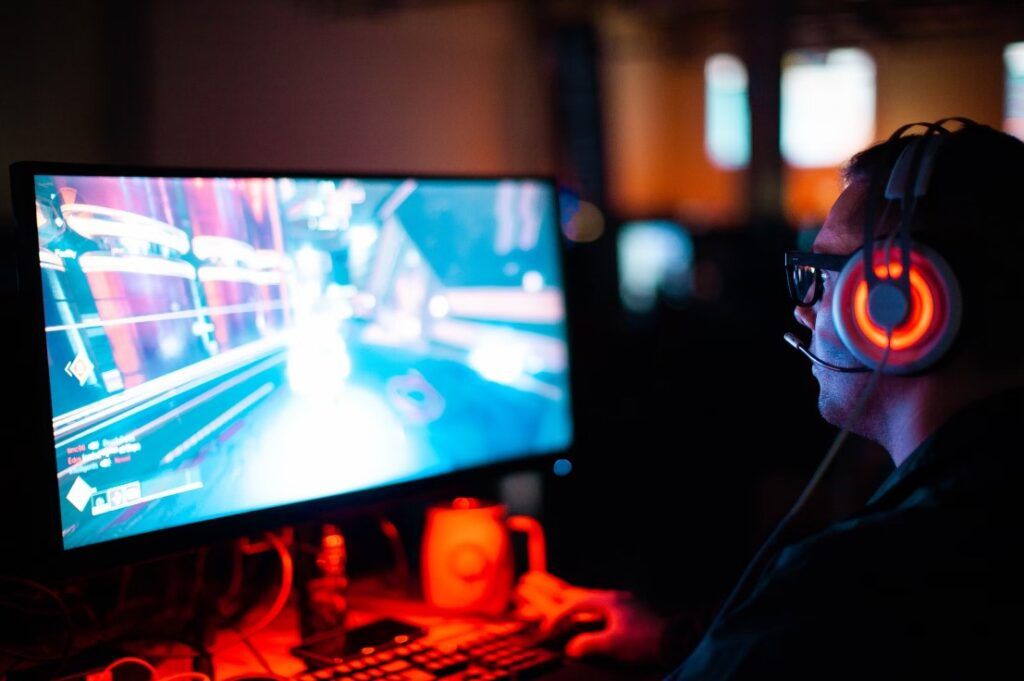
The gaming industry has witnessed exponential growth, particularly in multiplayer game development. Unlike single-player experiences, multiplayer games introduce a dynamic layer of interaction, enabling players to engage with each other in real-time. This makes the development of multiplayer games both an exhilarating and technically challenging endeavor.
From building seamless networking frameworks to crafting captivating game worlds, developers must navigate numerous complexities to deliver immersive and balanced multiplayer experiences. Here’s a comprehensive guide covering the key considerations for developing multiplayer games.
What Defines a Multiplayer Game?

Multiplayer games allow multiple players to interact in a shared gaming environment, either competitively or cooperatively. These interactions occur in real-time and can range from small-scale experiences, such as chess or one-on-one sports games, to massive online multiplayer role-playing games (MMORPGs) that accommodate hundreds or thousands of players.
The fundamental aspect of multiplayer games lies in the player interaction, which often takes precedence over the storyline. Unlike single-player games, multiplayer titles focus on creating a shared experience, relying heavily on technical systems like networking, synchronization, and matchmaking.
How Are Multiplayer Games Developed?

Developing a multiplayer game involves integrating several components that work harmoniously to deliver a seamless experience:
- Networking: Reliable data synchronization ensures players share the same game state.
- Game Logic: Mechanics, scoring, and player interactions are controlled by robust programming.
- Server Infrastructure: Stable client-server systems process and share game data efficiently.
These elements create the backbone of multiplayer games, enabling real-time communication and fluid interactions between players.
Key Technical Considerations
1. Network Architecture
One of the most critical aspects of multiplayer game development is choosing the right network architecture. The two primary options include:
- Client-Server Model:
In this setup, a central server maintains the game state while clients (players) send and receive data.- Pros: High reliability, improved cheat prevention, consistent game state.
- Cons: Higher operational costs, potential server overload.
- Peer-to-Peer (P2P) Architecture:
Players connect directly to each other without a centralized server.- Pros: Reduced server costs, easier implementation for smaller games.
- Cons: Vulnerability to cheating, desynchronization, and connection instability.
The choice of architecture depends on the game’s scale and purpose. For large-scale multiplayer games, the client-server model is generally preferred due to its reliability and security.
2. Latency and Lag Compensation
Latency, often referred to as “ping,” measures the delay between a player’s action and the server’s acknowledgment. In fast-paced games like first-person shooters, even a few milliseconds of delay can significantly affect gameplay.
Developers must implement lag compensation techniques, such as:
- Client-side prediction: Estimating the results of player actions locally.
- Server reconciliation: Correcting discrepancies between the server and client.
These measures ensure fairness and maintain player satisfaction, even in regions with varying internet speeds.
3. Synchronization and State Management
Synchronization is vital for maintaining a consistent game state across all players. Critical data, such as player positions, actions, and game events, must be updated in real-time.
Key synchronization challenges include:
- Rubberbanding: When players appear to snap back to previous locations.
- Desync: When players see different game states due to lag or data loss.
To address these issues, developers should prioritize essential data for synchronization while minimizing unnecessary updates to conserve bandwidth.
4. Creating an Engaging Game World
The heart of any game lies in its content. Multiplayer games require immersive worlds, engaging characters, and dynamic environments to captivate players.
Key elements include:
- Graphics: High-quality visuals enhance immersion but require significant investment.
- Sound Design: Audio effects and music add depth to the gaming experience.
- Dynamic Elements: Events, quests, and challenges keep players engaged over time.
Building a compelling game world demands creativity and careful planning, as well as collaboration between designers, artists, and developers.
5. Security and Anti-Cheat Systems
Cheating undermines the integrity of multiplayer games and frustrates players. Common cheating methods include:
- Aimbots: Automatically targeting opponents.
- Wallhacks: Seeing through walls or obstacles.
- Packet Manipulation: Altering data to gain unfair advantages.
Effective anti-cheat measures include:
- Server-side validation: Verifying actions against game rules.
- Encryption: Securing communication between clients and servers.
- Monitoring Tools: Identifying suspicious behavior and taking corrective action.
Robust security ensures fair play, maintaining a positive player experience.
6. Matchmaking and Player Balance
A good matchmaking system pairs players with others of similar skill levels, ensuring competitive and enjoyable gameplay. Factors to consider include:
- Skill-Based Matching: Balancing player abilities.
- Geographic Proximity: Reducing latency by connecting nearby players.
- Player Preferences: Considering game modes and playstyles.
Balanced matchmaking encourages player retention and prevents frustration from mismatched games.
7. Comprehensive Testing and Quality Assurance
Multiplayer games rely on complex systems involving players, servers, and networks. Thorough testing ensures these systems work cohesively.
Essential testing stages include:
- Alpha Testing: Identifying bugs in early development.
- Beta Testing: Gathering feedback from real players.
- Load Testing: Evaluating server capacity under high player counts.
A detailed testing strategy is crucial for delivering a polished and reliable multiplayer experience.
8. Managing Development Complexity
The development of multiplayer games involves significant technical and logistical challenges. Key areas to manage include:
- Server Infrastructure: Ensuring stability and scalability.
- Player Base Management: Supporting large-scale player populations.
- Cross-Platform Compatibility: Delivering consistent experiences across devices.
Clear project management and collaboration between development teams are essential for overcoming these complexities.
Conclusion

Developing a multiplayer game is a multifaceted process that demands technical expertise, creative vision, and meticulous planning. By addressing key considerations—such as network architecture, latency, content creation, and security—developers can create games that captivate players and deliver seamless experiences.
Whether it’s a fast-paced shooter or an expansive MMORPG, successful multiplayer games balance engaging gameplay with robust technical systems, ensuring a memorable experience for players worldwide.








By Radoslav Jokic
Updated on 9th March 2025